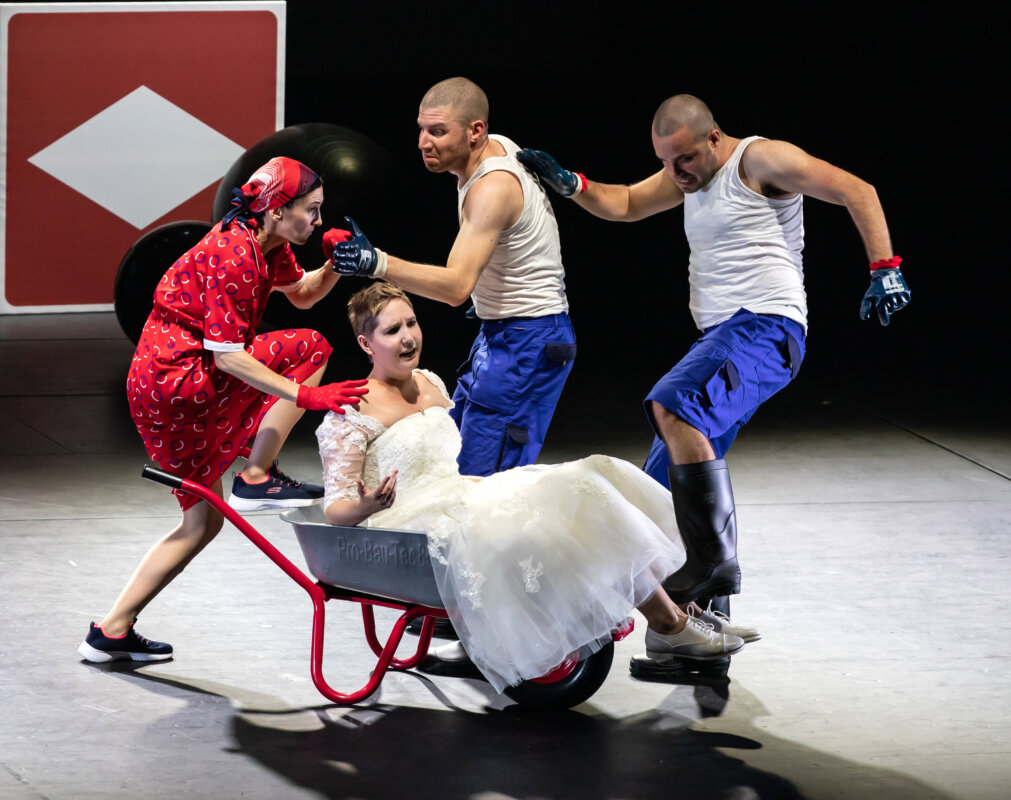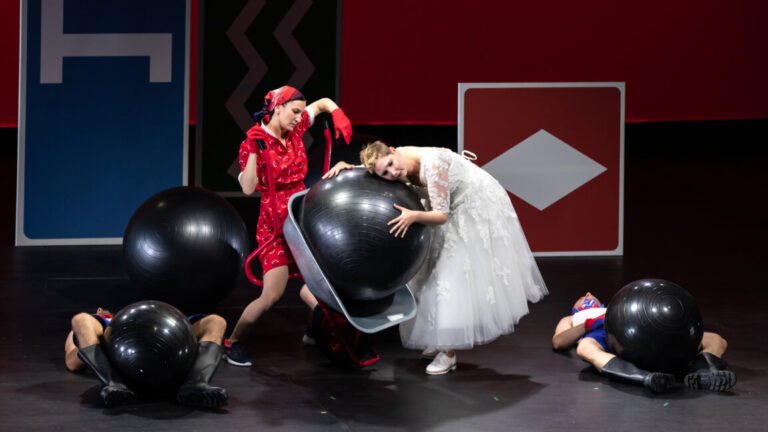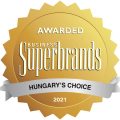During Müpa Budapest’s October Liszt Festival, two evenings – one in the Budapest Music Center (BMC) and the other at Müpa Budapest’s Festival Theatre — presented multiple premieres of brilliant new musical languages with bright new color spectrums, many of which explored the subterranean.
Composers Péter Eötvös, Georges Aperghis, and Gergely Vajda, presented their scores in person, with only British composer George Benjamin in absentia. Younger composers were also on the docket: Balázs D. Kecskés and Francisco Dominquez also enjoyed world premieres.
Eötvös’ Contemporary Music Foundation at the BMC presented a mixed bag on October 14, employing several young conductors from the Foundation’s masterclass to conduct the Danubia Orchestra Óbuda in a program starting with R. Strauss’s “Serenade” for 13 wind instruments, cleverly followed by Kecskés’ “Wind.” The latter’s three-part suite (also for 13 wind instruments) was given individual titles from Biblical phrases that referred to nature’s meteorological phenomena. Kecskés exploited each instrument’s colors, singly and collectively; especially inventive was his scoring of ultra-low chords for reeds (like the contrabassoon) that swelled and palpably vibrated, like the earth slowly burping. He understands the listeners’ psychology, never asking too much of our ears but enough to inveigle them with seductive sororities. Because I was enjoying his curiously sepulchral language, it ended too soon, in my opinion.
What followed was the Hungarian premiere of Eötvös’ “Aurora” in three parts (each with a different conductor) and featured three solo string basses, led by Berlin Philharmonic’s bassist Matthew McDonald for whom the piece was written in 2019. Eötvös’ inspiration was seeing the Northern Lights (Aurora Borealis) as he flew over Alaska. His rich orchestration explored voluminous depths and shimmering heights, string section lushness with plenty of pizzicato, and a highly lyrical use of the solo basses’ capacities – at one point, McDonald’s solo had almost a trombone’s quality. “Aurora” is a gorgeous showpiece for string basses, both for soloists and for the bass section which took the spotlight frequently.

Into the Little Hill – photo: Anett Kállai-Tóth / Müpa Budapest
Dominguez’ “Kharir IV” was an effective texture that referenced Arabic music from Northern Africa and medieval Andalusia, mixed with contemporary sounds not unlike modern Cairo’s traffic and wild zephyrs blowing away everything in their path. This piece also gave the contrabassoon a subterranean solo before abruptly disappearing.
Aperghis’ “Migrants” featured two singers: Márta Murányi and Viola Thurnay, who spoke and sang English texts compiled from the words of Joseph Conrad and quotes from migrants. The three-movement score is dedicated to and descriptive of the tragedies that have befallen humans who have attempted to arrive at Europe’s borders in recent years. Originally commissioned by Ensemble Resonanz for a production that was focused around Janácek’s song cycle “The Diary of One Who Disappeared,” Aperghis concocted a Hitchcockian horror scene with screams in the night and the constant swirling of water and wind. At times dissonant and harsh, and using angular mid-century compositional tropes, Aperghis’s score for strings and percussion was ably conducted by Eötvös’ disciples, who helped paint the tone poem of tragedy (“They were dying slowly!” and “It was very clear they were not criminals!” the singers exclaim) that ended with a fading blur of unfathomable despair.
Two little operas with big ideas
Two one-act operas premiered in Müpa Budapest’s Festival Theatre on October 21; both will linger long in the memory as remarkable, original, and wonderfully staged creations.

Gergely Vajda’s surreal masterpiece, “Fuharosok” (Transporters) was performed by his UMZE Ensemble, and singer Anna Molnár as the centerpiece of a haunting scenario based on Péter Esterházy’s cult novel of remembered trauma and fractured reality. This work was paired with George Benjamin’s “Into the Little Hill” with singers Katalin Károlyi and Esther-Elisabeth Rispens who functioned as narrators in a libretto by Martin Crimp. Both one-acts, which share a common story of a victimized young girl, were staged by Csaba Horváth and his Forte Company, and conducted by Vajda.
Horváth’s conceptual mise-en-scène and choreography for “Fuharosok” were visually compelling and kinetically thrilling via the use of five large rubber exercise balls, which were cleverly used by three male dancers (Barnabás Horkay, Márton Pallag, and Kristóf Widder) to symbolically convey everything from furniture to the entire emotional biosphere. The three men (often including Szandra Nádasdi), through their acrobatic movements, embodied many elements: a chorus, a gang of rapists, silent commenters, a crowd, predatory figures, and pantomime solo characters in Zsófika’s (Molnár) child-like world. Two of the men reappeared in Benjamin’s opera to perform similar actions, but with less menace and more visual commentary.

Molnár as Zsófika travels around the stage as if she’s sleepwalking through a nightmare full of relatives and predators, while wearing a white dress and shoes. She sings her monologue of lingering trauma with a waif-like undertone, and then momentarily steps out of herself to intone other characters’ voices. It’s a tour-de-force role for one singer and Molnár aces it with tonal purity, musical accuracy, and an evanescent spookiness.
Vajda’s filigreed orchestral accompaniment is beautifully descriptive, often signals Zsófia’s psychic detachment with eerie little floating clusters, and Vajda always maintained the perfect volume intimacy for Molnár’s astonishing performance.

Written in 2006 and premiered at the Festival d’Automne á Paris, “Into the Little Hill” made its Hungarian debut on this evening. The story takes its cue from the “The Pied Piper of Hamelin” but turns it into something much darker: the rats are everywhere but the children of the village are missing. Károlyi and Rispens play multiple roles in the community, expressing their fear and confusion. Rispens’ virginal all-white dress and shoes suggest the young innocents and Károlyi’s trench coat suggests the adults. Both singers were vocally and dramatically splendid, even though occasionally overpowered by the orchestra, which contained some unusual instruments like cimbalom, bass flute, mandolin, contrabass clarinet and the basset horn (a woodwind instrument popularized by Mozart). “Into the Little Hill” and “Fuharosok” bring to mind Benjamin Britten’s “Turn of the Screw” for their dark and diabolical secrets as the impetus for an inspired musical work. The combined inspiration of Vajda and Horváth here, though, produced an elevated level of ingenuity, production values, and performance standards.











